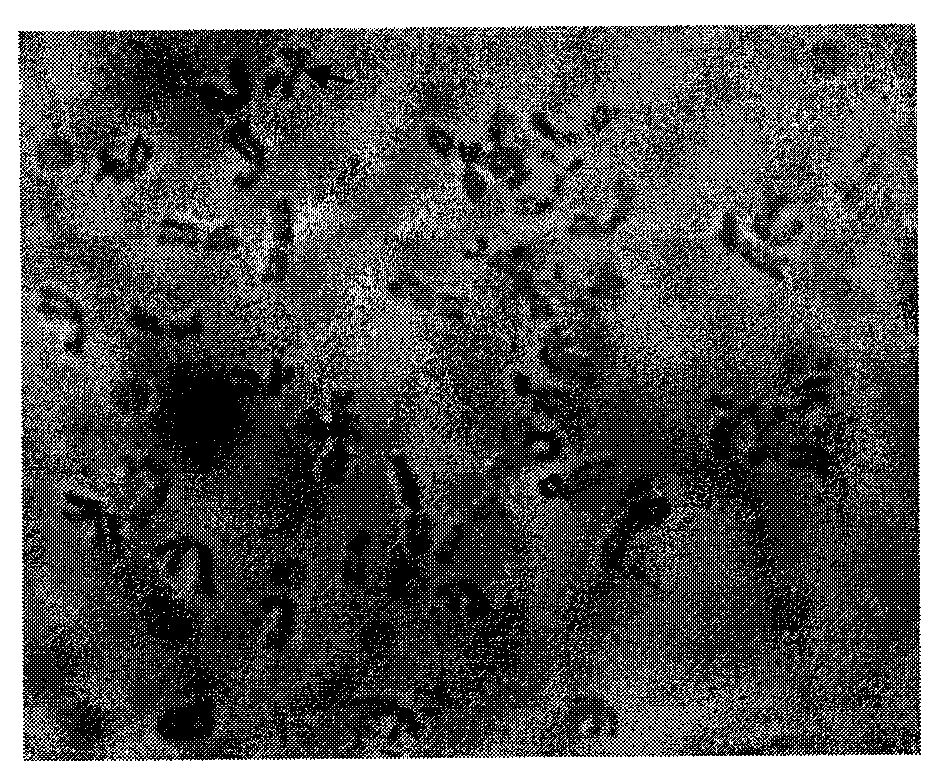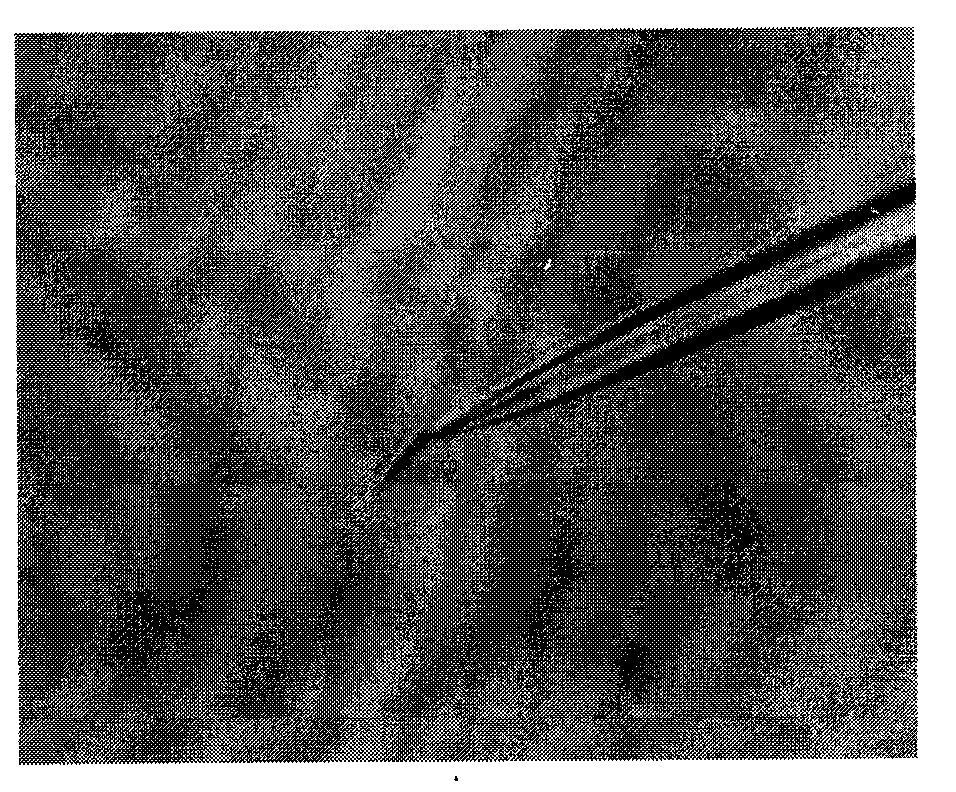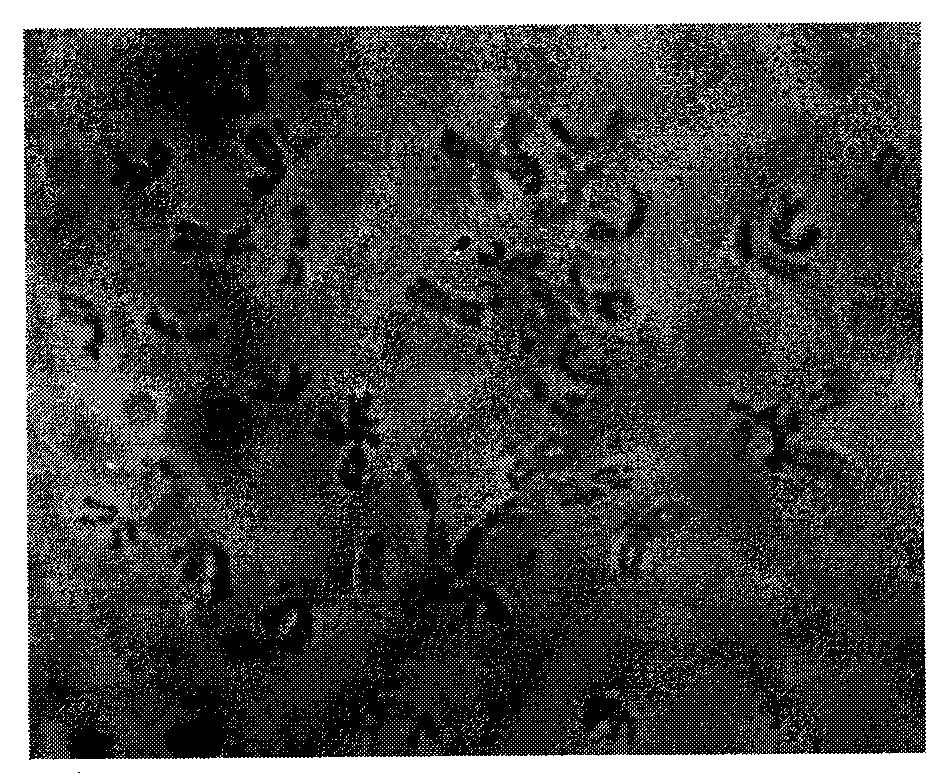Method for separating chromosomes in plant cells by using fluorescence in-situ hybridization
A fluorescence in situ hybridization and plant cell technology, applied in DNA preparation, chemical library, combinatorial chemistry, etc., can solve the problems of immature plant chromosome banding technology and application limitations, avoid chemical treatment, broaden the scope, and prevent damage effect
- Summary
- Abstract
- Description
- Claims
- Application Information
AI Technical Summary
Problems solved by technology
Method used
Image
Examples
Embodiment 1
[0019] Embodiment 1, the microseparation technique of wheat chromosome
[0020] 1. Chromosome production
[0021] Wheat seeds germinated on a petri dish with double-layer filter paper at 23°C, and treated at 4°C for 24 hours after dew blanching, then transferred to 23°C for constant temperature cultivation for 24 hours, cut the roots of germinated seeds, and treated them under ice water at 0°C for 36 hours. Hours, after absorbing the water on the surface of the root tip, place it in fresh Carnoy's fixative solution (absolute ethanol: glacial acetic acid = 3: 1) and fix it for 10 minutes, then transfer it to 70% ethanol (volume percentage), Store at 4°C until use. Get the fixed root tip, rinse it with sterile water, cut the root tip under aseptic conditions and place it in 2% cellulase (R-10 Yakult.) and 2% pectinase (Y-23 Yakult.) 1: In the mixed solution prepared in 1, enzymatically hydrolyze at 37°C for 3 hours, gently rinse twice with sterile water, stain with 1% acetic a...
PUM
 Login to View More
Login to View More Abstract
Description
Claims
Application Information
 Login to View More
Login to View More - R&D
- Intellectual Property
- Life Sciences
- Materials
- Tech Scout
- Unparalleled Data Quality
- Higher Quality Content
- 60% Fewer Hallucinations
Browse by: Latest US Patents, China's latest patents, Technical Efficacy Thesaurus, Application Domain, Technology Topic, Popular Technical Reports.
© 2025 PatSnap. All rights reserved.Legal|Privacy policy|Modern Slavery Act Transparency Statement|Sitemap|About US| Contact US: help@patsnap.com



